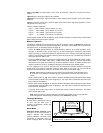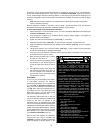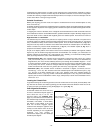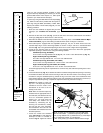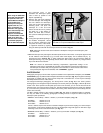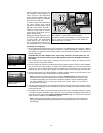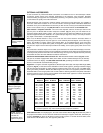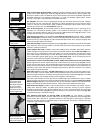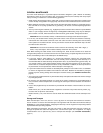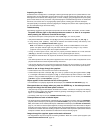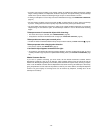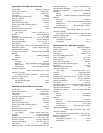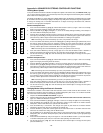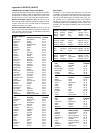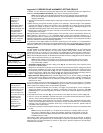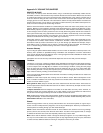
- 22 -
GENERAL MAINTENANCE
Your ETX model telescope is a precision optical instruments designed to yield a lifetime of rewarding
observations. Given the care and respect due any precision instrument, the telescope will rarely require
factory servicing or maintenance. Use the following guidelines:
1. Avoid cleaning the telescope’s optics: a little dust on the front surface of the telescope’s correcting lens
causes virtually no degradation of image quality and should not be considered reason to clean the lens.
2. When absolutely necessary, remove dust from the front lens with gentle strokes of a camel-hair brush or
blow it off with an ear syringe (available at any pharmacy). Do not use a commercial photographic lens
cleaner.
3. You may remove organic materials (e.g., fingerprints) from the front lens with a solution of 3 parts distilled
water to 1 part isopropyl alcohol. A single drop of biodegradable dishwashing soap may be added per
pint of solution. Use soft, white facial tissues and make short, gentle strokes. Change tissues often.
CAUTION: Do not use scented, colored, or lotioned tissues or damage could result to the optics.
4. In the very rare situation where cleaning the inside surface of the corrector lens becomes necessary,
unthread the lens cell located at the front of the main tube. The entire correcting lens and secondary
mirror system are mounted in this cell. You may use the lens-cleaner solution described in step 3 to clean
the inside surface of the lens.
CAUTION: Do not touch the aluminized circular surface of the secondary mirror with a finger, a
tissue, or any other object. This will almost certainly scratch the mirror surface.
Note: When cleaning the inside surface of the correcting lens, leave the lens mounted in its metal cell
throughout the process. Do not remove the lens from its metal housing or optical alignment of the lens will
be lost, necessitating a return of the telescope to the Meade factory.
5. If your ETX model is used outdoors on a humid night, telescope surfaces may accumulate water
condensation. While such condensation does not normally cause any damage to the telescope, it is
recommended that the entire telescope be wiped down with a dry cloth before being packed away. Do
not, however, wipe any of the optical surfaces. Rather, simply allow the telescope to sit for some time in
warm indoor air, so that the wet optical surfaces can dry unattended. In addition, the dust cap should not
be placed back on to the optical tube until the telescope is thoroughly dry.
6. If your ETX model is not to be used for an extended period, perhaps for one month or more, it is advisable
to remove the eight AA-size batteries from inside the drive base. Batteries left installed for prolonged
periods may leak, causing damage to the telescope’s electronic circuitry (see
ASSEMBLY INSTRUCTIONS,
page 9).
7. The super-gloss anodized finish of any ETX model’s deep-violet optical tube fades if left in direct sunlight
for prolonged periods.
8. Do not leave your ETX model outdoors on a warm day or inside a sealed car for an extended period of
time; excessive ambient temperatures can damage the telescope’s internal lubrication and electronic
circuitry.
9. A set of two (English-format) hex wrenches is provided with ETX models. These wrenches are used as
follows:
• Small wrench (.05”): Use the small wrench to tighten the set-screws of any knobs that may loosen (e.g.,
the focus knob or flip-mirror control knob).
• Medium wrench (1/16”): This wrench is used to detach the viewfinder bracket from the telescope’s rear
cell.
Storage and Transport
When the telescope is not in use, store it in a cool, dry place. Do not expose the instrument to excessive
heat or moisture. It is best to store the telescope in its original box with the vertical and horizontal locks (6
and 9, Fig. 1) in the unlocked positions. If shipping the telescope, use the original box and packing material
to protect the telescope during shipment.
When transporting the telescope, take care not to bump or drop the instrument; this type of abuse can
damage the optical tube and/or the objective lens, and knock the optics out of alignment. It is highly
recommended to use an optional carry case to transport the telescope (see OPTIONAL ACCESSORIES,
page 21).



